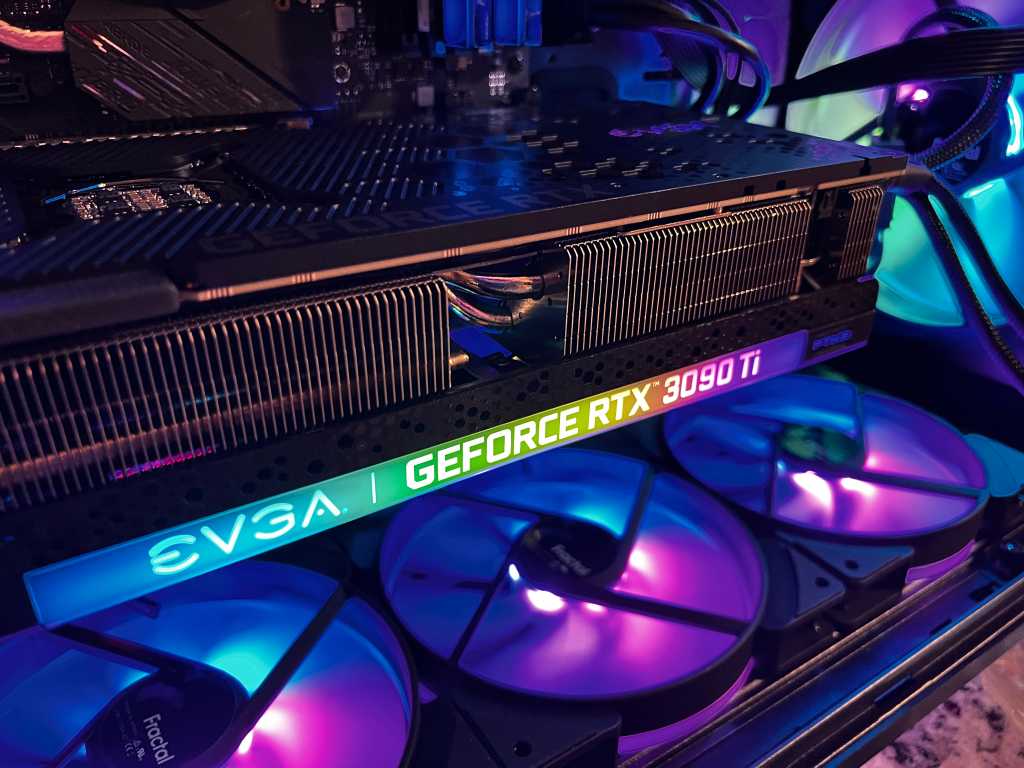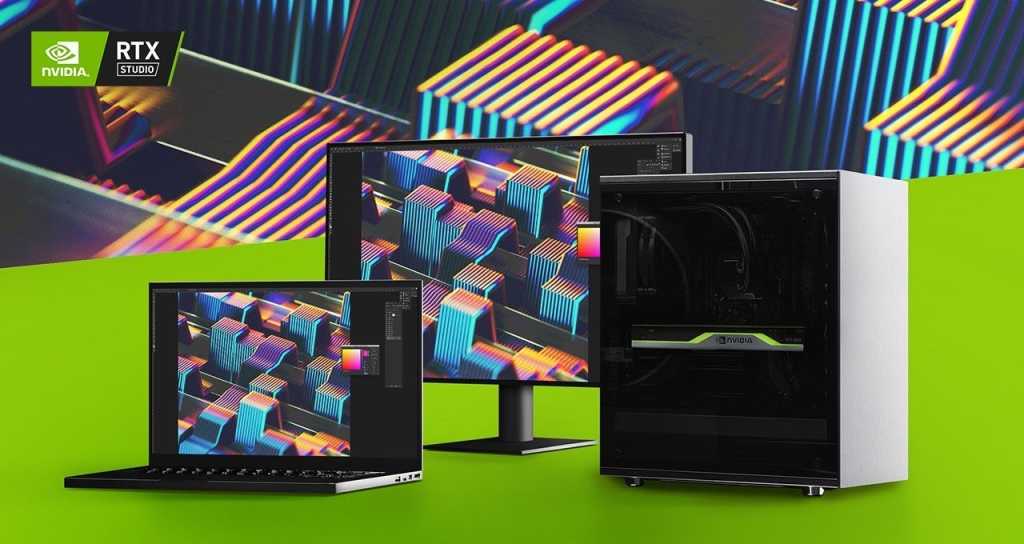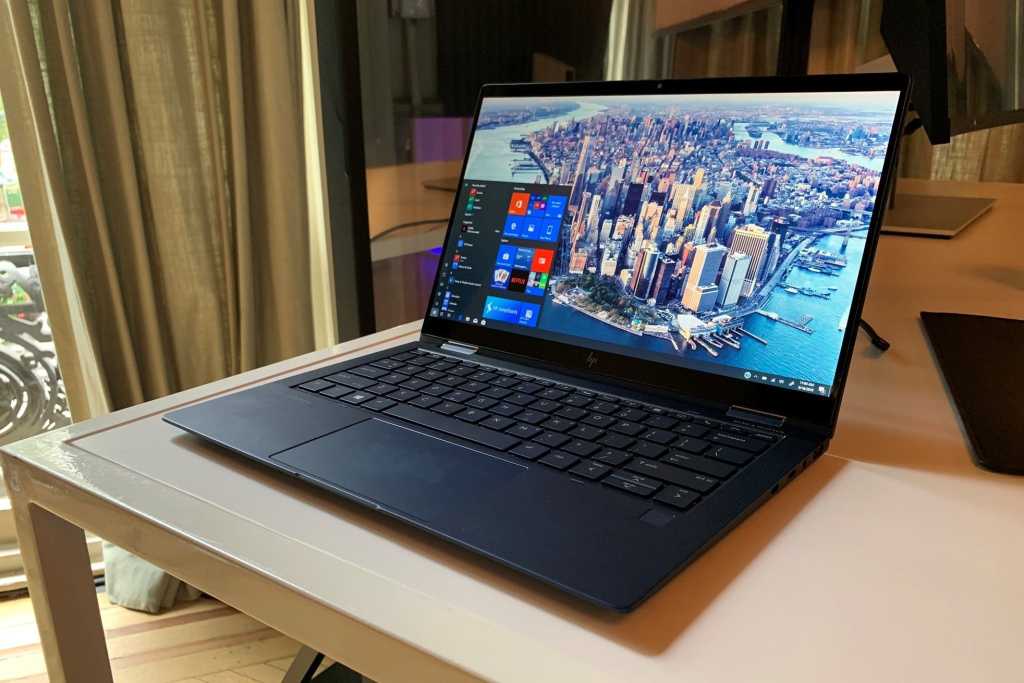The Nvidia GeForce RTX 3090 Ti is a monstrous graphics card with an interesting story to tell. It’s the first of its “Ti” kind in the flagship “90” series from Nvidia, perhaps replacing Titan-level GPUs of times past. It also almost didn’t happen, having been delayed for months and releasing right when graphics card prices started to rapidly decrease.
If the RTX 3090 Ti had a yearbook picture, underneath would likely read: “Most likely to be very, very expensive.” This beast carries a retail price of $1999, and trust us, this is the first time MSRP actually meant something this lost GPU generation—you can find these powerful graphics cards readily available. Still, that’s a fair bit more than the vanilla GeForce RTX 3090’s already-steep $1499 sticker cost.
Seems like a bad deal, right? Not so fast. I’ve been using EVGA’s hot-rodded GeForce RTX 3090 Ti FTW3 Ultra for the last several weeks, as well as Nvidia’s RTX 3090 Ti Founders Edition, and discovered 5 key takeaways you need to know.
Nvidia’s RTX 30-series end game
The 3090 Ti maximizes the original RTX 3090’s potential. Unlocking Nvidia’s full GA102 GPU gives it a minor bump in specs—slightly more ray tracing cores, a faster base clock, and faster GDDR6x memory. This translates to 5 to 10 percent faster performance than the RTX 3090, but in real world use, it’s hard to notice a difference even versus a GeForce RTX 3080 (which costs well under half as much) in gaming.
That’s the first insight from using the RTX 3090 Ti: It’s a mix of being excessive, overkill, and expensive, while also being the fastest, most refined, and flexible GPU in Nvidia’s GeForce lineup. This is the overpowering swan song for Nvidia’s Ampere architecture.
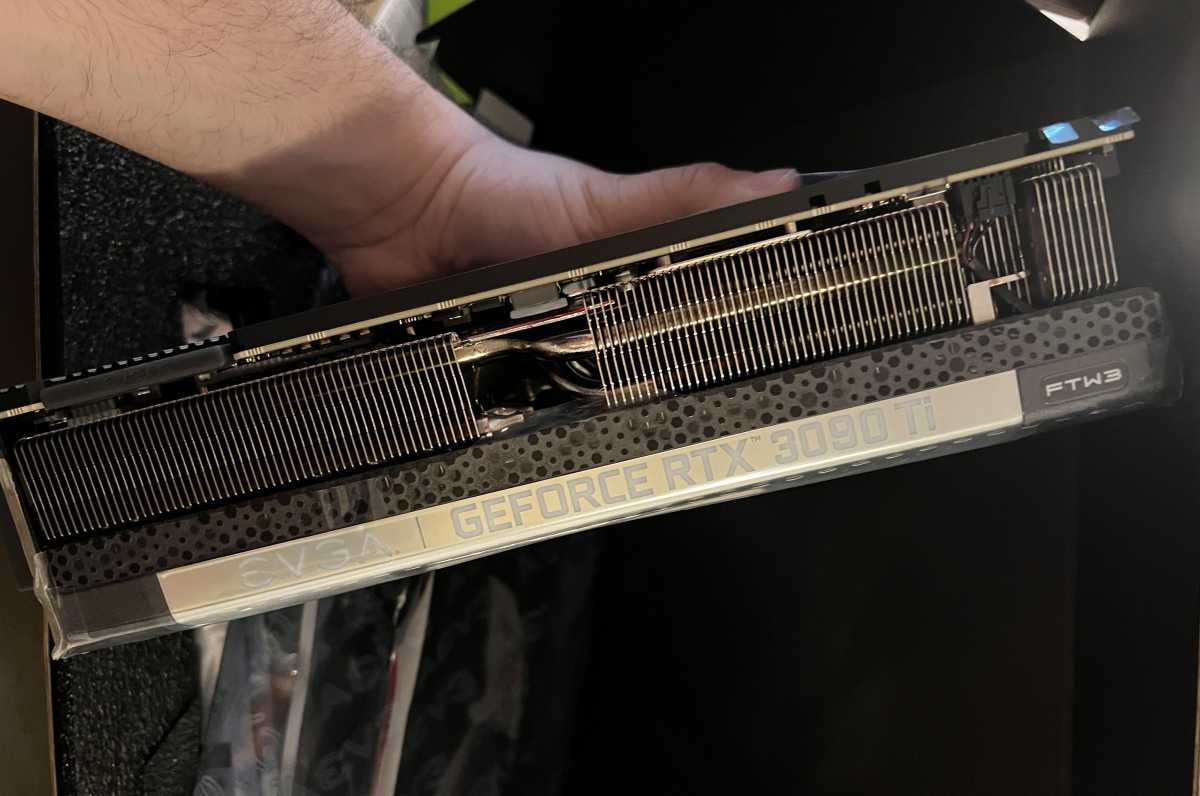
Thiago Trevisan/Foundry
Picture this: A thick EVGA FTW3 3090 Ti smashing 4K frames on whatever game you throw at it while being imperceptibly quiet on your desk. Impressive The steady flow of heat is enough to melt your ice cream, though.
Unfortunately, that may not be enough to carry it beyond just a footnote in the annals of GPU history.
Not for gamers? But it’s GeForce!
One thing I quickly learned with this graphics card: Despite carrying the GeForce moniker, it’s massively overkill for gaming. It’s really a hybrid GPU, thanks to its goliath 24GB of VRAM. This means it’s best suited by content creation, 3D rendering, and other professional workflows.
Does the RTX 3090 Ti squeak out a few more frames than the $1199 GeForce RTX 3080 Ti? Sure, it does. But when you compare the price differential it quickly becomes apparent that the latter is really a much more sensible option, and at hundreds of dollars cheaper. (You can make an argument that the faster 12GB version of the RTX 3080 is also a sweet spot GPU for high-end gaming at $999.)
When viewed in a broader sense, the 3090 Ti is really a workstation-level GPU that just happens to be the best at gaming. (We’ve heard of many professionals choose the RTX 3090-series GPUs over typical Quadro Workstation options since they provide better value.)
Be ready for some…drawbacks
After you’ve drained your gold vault to pay for it, be ready for more challenges. You’ll need a beefy power supply to handle the almost 500W power draw that an EVGA FTW3 3090 Ti will pull. Depending on your CPU choice, such as an Intel 12900KS or AMD Threadripper, a 1000W-plus power supply wouldn’t be overkill.
You’ll also need at least three 8-pin power cables to tie into the custom 12-pin adapter that ships with the RTX 3090 Ti. This is typical with custom versions of higher-end GPUs, but this time even the Founders Edition needs more cables. (The 3090 Founders Edition got away with just two 8 pin cables!)
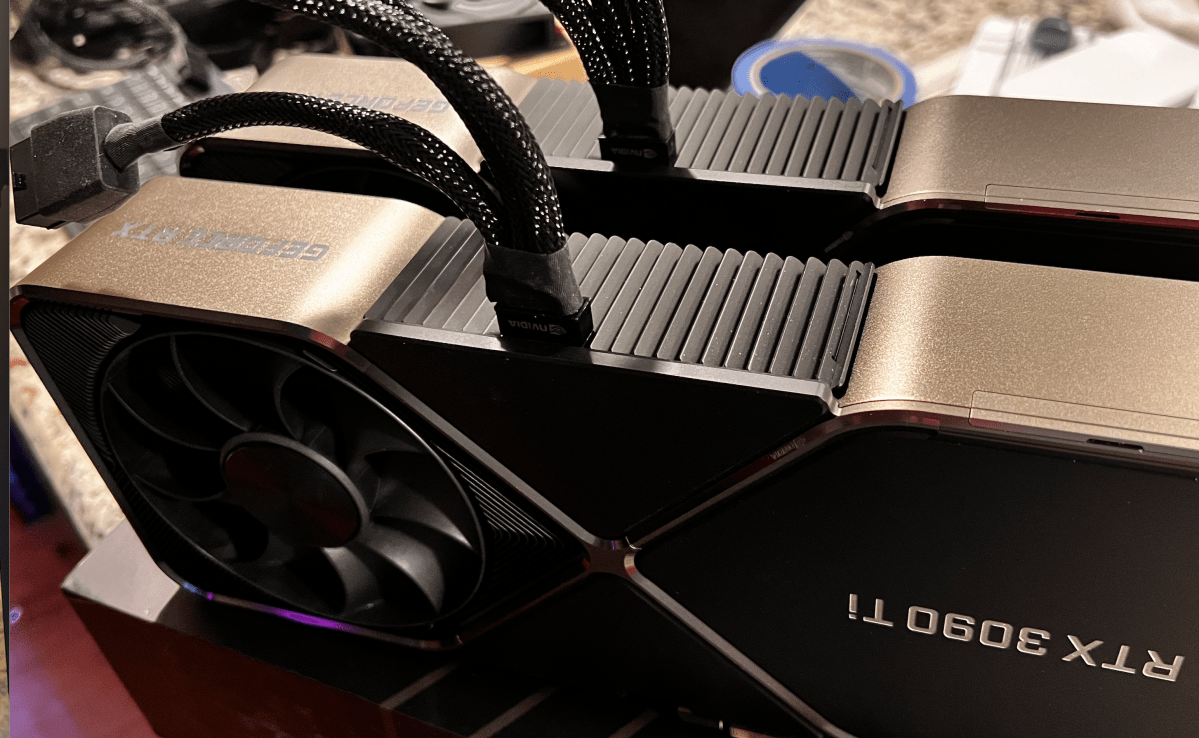
Powering the RTX 3090 Ti requires triple 8-pin connectors converging into a single 12-pin adapter. It takes a lot of juice.
Thiago Trevisan/Foundry
And with great power, comes great heat output. Thankfully the GPU itself will be fine, thanks to the extra-thick cooler on most 3090 Ti variants, like the EVGA FTW3. But your other components will have to deal with the tremendous amount of heat coming out of your GPU. Case airflow and fans will be vital to keeping your components cool. This also translates to needing ample room—these are bulky GPUs so they typically won’t fit in a mini-ITX case. Even mid-sized cases will be a struggle with the 3.5 slot coolers!
The RTX 3090 Ti spits out unprecedented levels of heat, and it’s something that you only appreciate after using it next to you for weeks. (Make sure your air conditioner is ready to go in the summer, too!)
A glimpse into the next generation
The RTX 3090 Ti isn’t just the last gasp of the RTX 30-series, but also a glimpse into the next generation of Nvidia graphics cards. We can likely expect power draw to increase further to give us tremendous performance in the future.
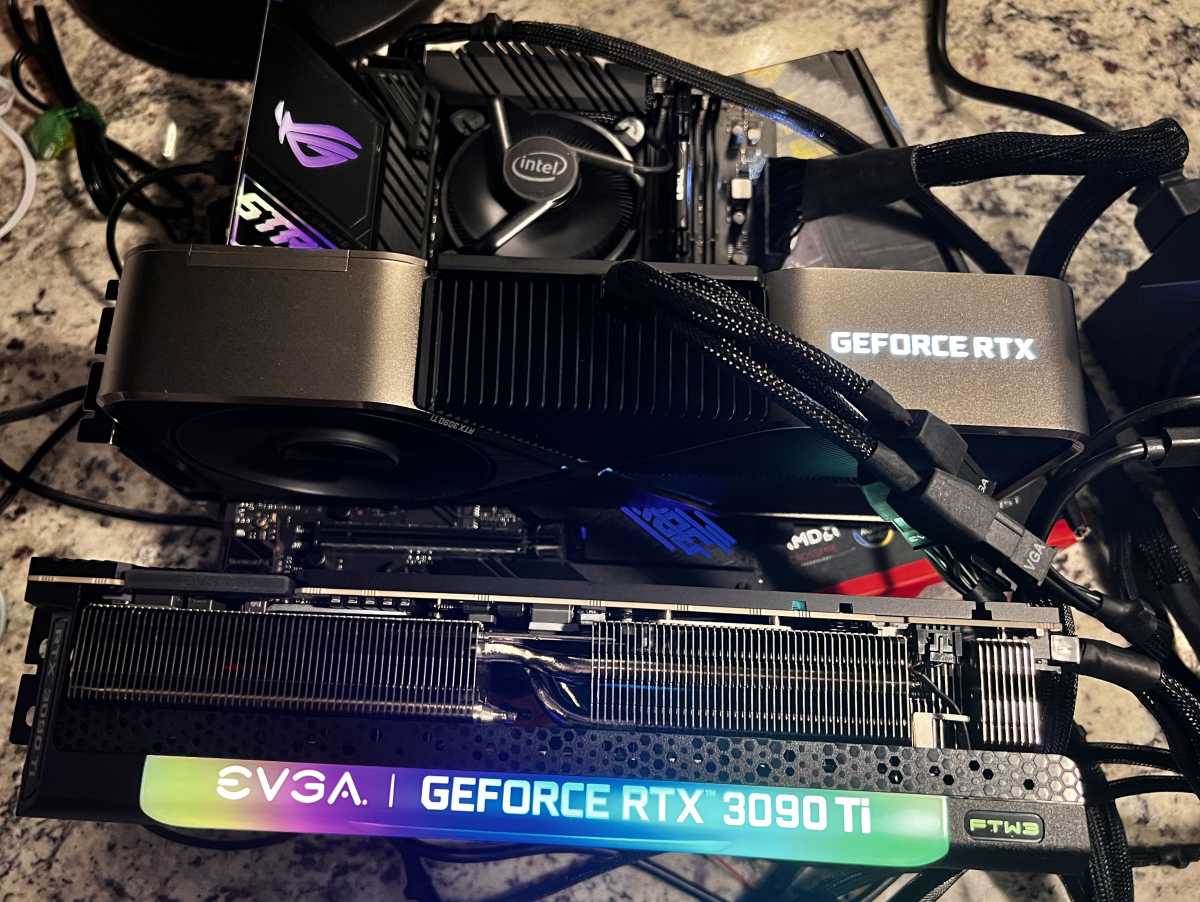
The custom EVGA RTX 3090 Ti FTW3 Ultra is noticably larger than the already-beefy Nvidia Founders Edition.
Thiago Trevisan/Foundry
From using the 3090 Ti, the first thing that struck me was the outsized cooler designs. Typically, custom graphics card makers will use similar coolers across different tiers of GPUs, with only small differences between them, but the 3090 Ti FTW3 Ultra’s cooler is truly thicker than most would imagine. That shows that future cooler designs are wide open to “bulking up” even further to handle what will likely be ever increasing cooling needs with greater watts.
It’s actually in stock at MSRP
Perhaps one of the most important takeaways? The GeForce RTX 3090 Ti is the first graphics card launch in the RTX 30-series that’s been readily available, and at MSRP.
Across the internet on the day of the 3090 Ti’s launch, you could easily find several models available for $1999, and even fully tricked-out custom versions like the EVGA FTW3 or Asus Strix were only a $200 to $300 markup. By comparison, you’d pay an extra $500 to $800 (or more!) for custom versions of the non-Ti RTX 3090 for much of its lifetime.
After years of chip shortages, the RTX 3090 Ti was released at the beginning of the great GPU price decline, with rapidly lowering prices and increasing supply. The $1499 RTX 3090 was never a great value, as the RTX 3080 stole that limelight at $699. But at $1999, the RTX 3090 Ti is just not a graphics card most people want due to the sky-high price (even though it’s priced at or below the prices of many custom RTX 3090s on the current market).
Coupled with low crypto-miner demand, and the proximity to a perceived next-gen Nvidia launch later this year, and it’s clear to see why the RTX 3090 Ti sells in such low numbers. It would have made sense in the hyper inflated market of 2021, where even a lone RTX 3080 often sold for nearly $2000, but not now that we’re trending back to normalcy.


